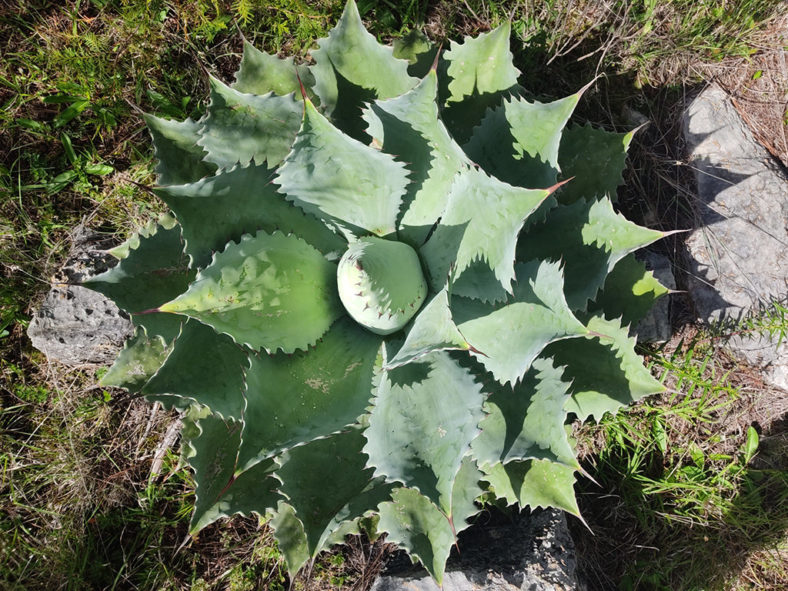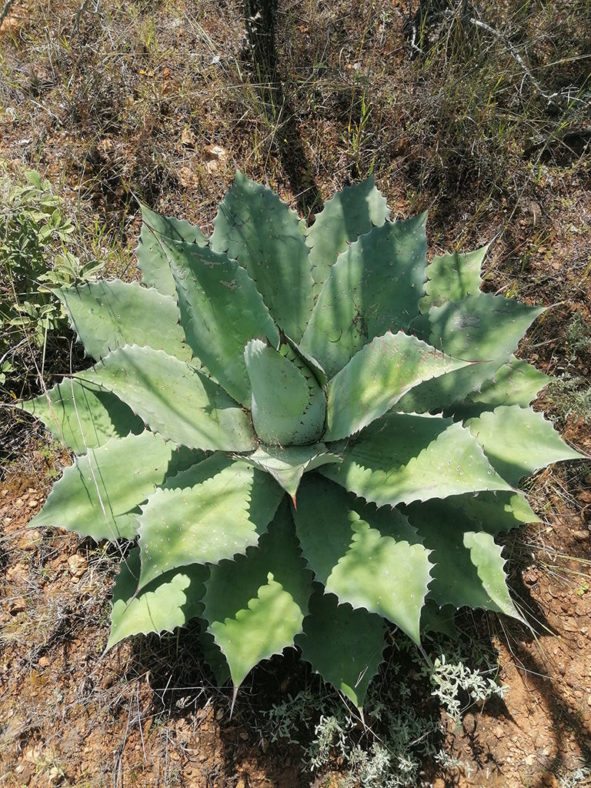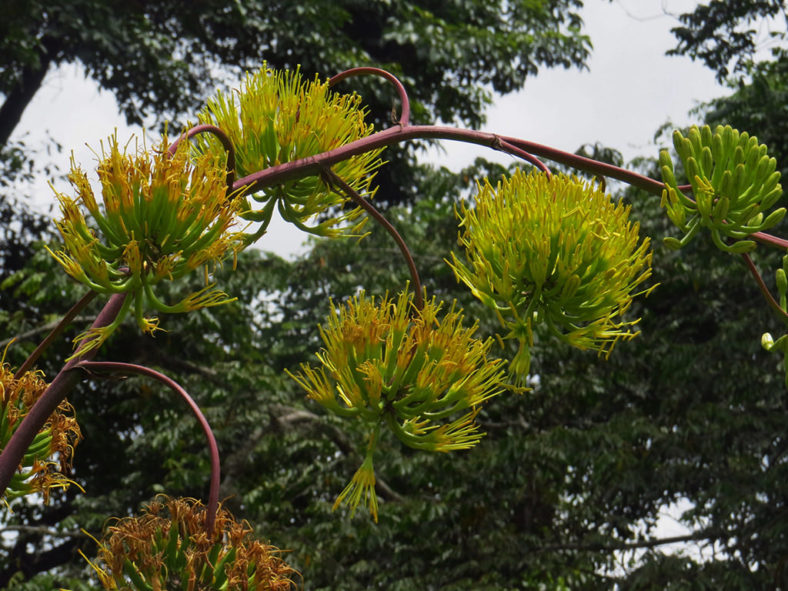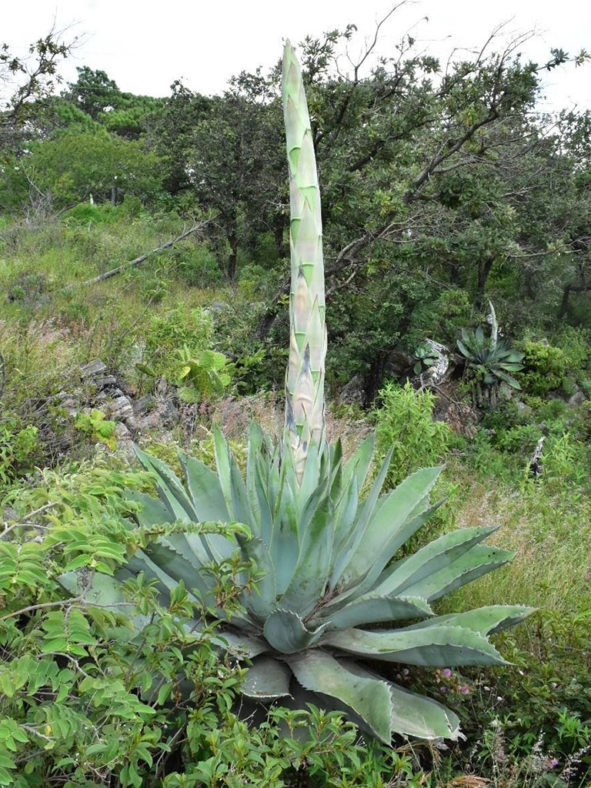Scientific Name
Agave seemanniana Jacobi
Synonym(s)
Agave scolymus var. seemanniana
Scientific Classification
Family: Asparagaceae
Subfamily: Agavoideae
Genus: Agave
Etymology
The specific epithet "seemanniana (see-mahn-ee-AY-na)" honors Berthold Carl Seemann (1825-1871), a German botanist and traveler who collected and described plants from the Pacific and South America.
Origin
Agave seemanniana is native to Mexico (Oaxaca and Chiapas), Guatemala, Honduras, and Nicaragua. It grows on dry, rocky slopes at elevations that range between 1,300 and 7,200 feet (400 and 2,200 m).
Description
Agave seemanniana is a succulent plant that forms a solitary rosette of light glaucous to yellowish-green leaves with irregularly toothed margins and a dark brown to grayish terminal spine. It is variable in the form and size of the leaves, margins, and teeth. The leaves are ovate to broadly lanceolate or spatulate, measuring up to 20 inches (50 cm) long and 8 inches (20 cm) wide.
The flowers are yellow, funnel-shaped, and arranged in dense clusters on branches at the upper half of the inflorescence that can grow up to 13.1 feet (4 m) tall. The flowers can reach up to 2.8 inches (7 cm) in length. After flowering, the rosette will die. The fruits are loculicidal capsules with black seeds.

How to Grow and Care for Agave seemanniana
Light: Like all Agaves, this plant requires full sun to partial shade. If growing A. seemanniana indoors, choose a bright, sunny window with as much sun as possible. From spring to fall, it loves going outside.
Soil: A. seemanniana will tolerate most soils if they have good drainage, but its preference is sandy or rocky soil.
Temperature: During the growing season, it likes warm temperatures, while in winter, when resting, this succulent enjoys cooler temperatures. A. seemanniana can withstand temperatures as low as 25 °F (-3.9 °C). USDA Plant Hardiness Zones 9b to 11b, 25 to 50 °F (-3.9 to 10 °C).
Watering: From spring to fall, water thoroughly when the soil becomes dry. In winter, water sparingly about once a month. Plants in containers require more frequent watering than those in the ground.
Fertilizing: Give your A. seemanniana a small amount of fertilizer in the spring during the first two years. After that, established plants seem to take care of themselves.
Repotting: If you notice your A. seemanniana becoming pot-bound, repot it with fresh soil in a pot slightly larger than the old one. Give the plant a week or so to readjust before you water it again.
Propagation: Since it is a plant with a solitary growth habit, A. seemanniana can be propagated only from seeds.
Learn more at How to Grow and Care for Agave.
Toxicity of Agave seemanniana
A. seemanniana is not toxic to humans but may be mildly poisonous to children and pets.
Links
- Back to genus Agave
- Succupedia: Browse succulents by Scientific Name, Common Name, Genus, Family, USDA Hardiness Zone, Origin, or cacti by Genus
Photo Gallery
Click on a photo to see a larger version.


